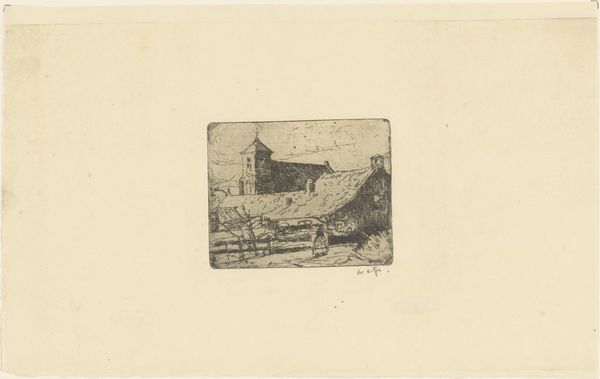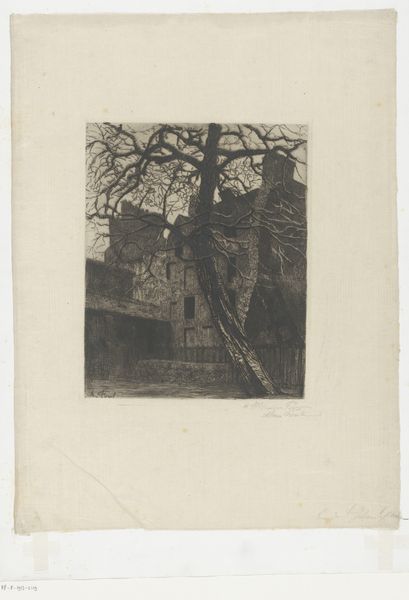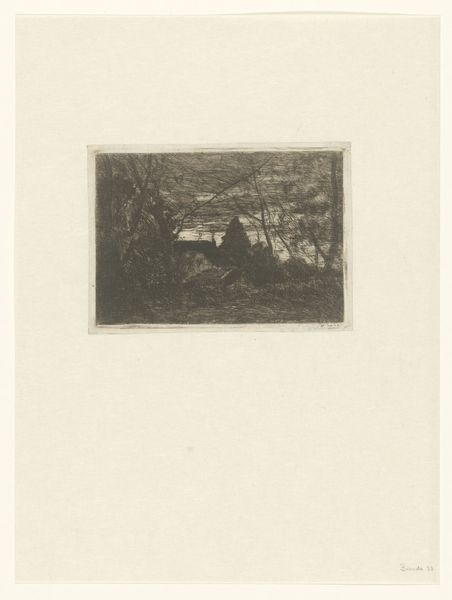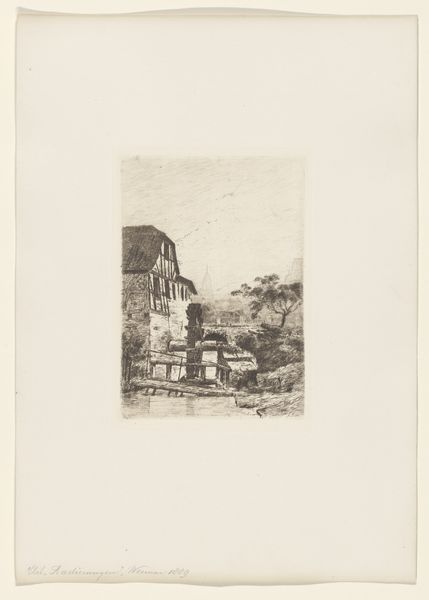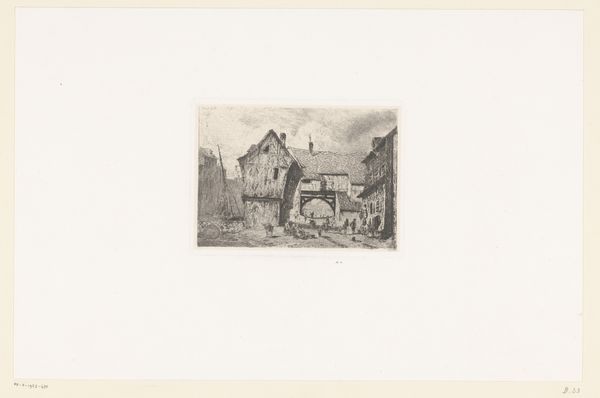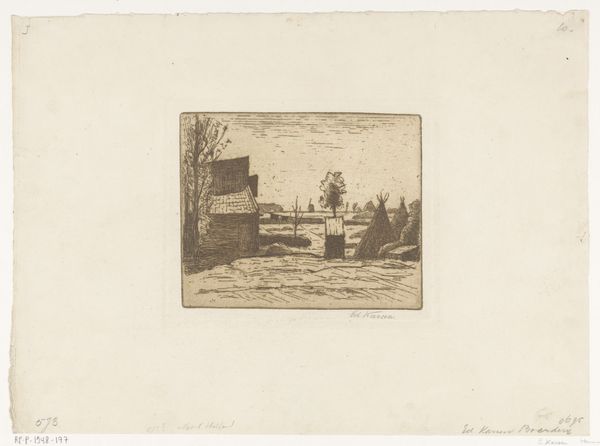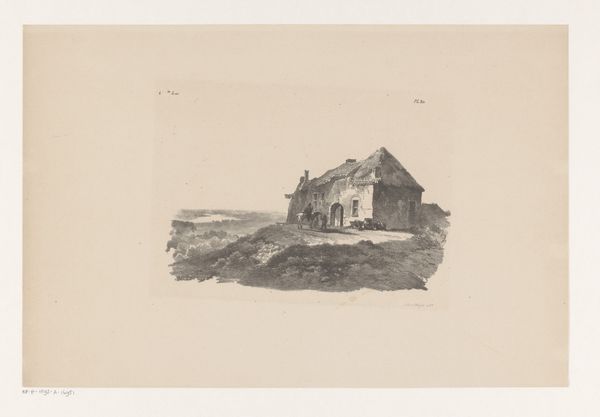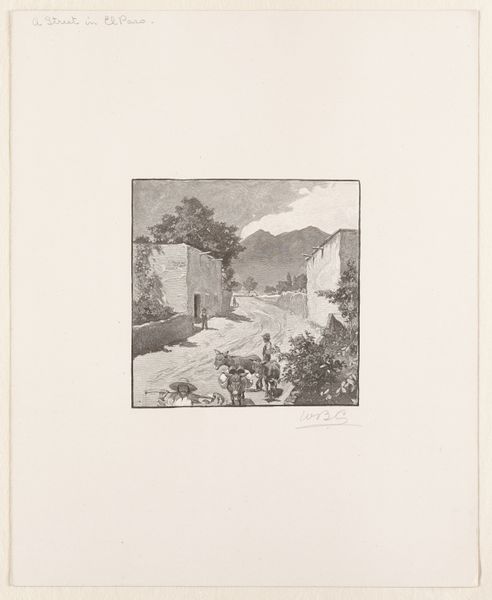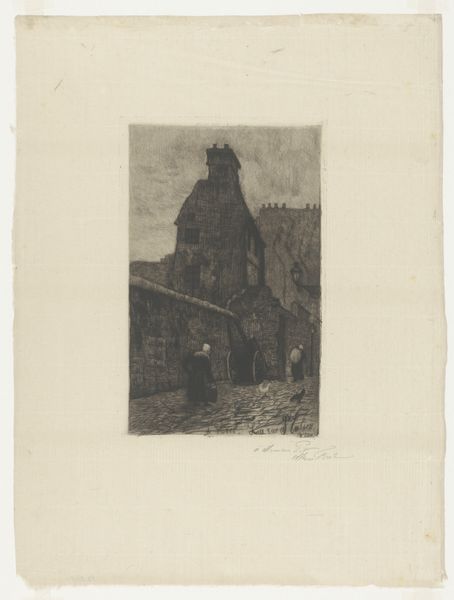
Dimensions: height 633 mm, width 474 mm
Copyright: Rijks Museum: Open Domain
Editor: Here we have "Huisje te Laren," a print made with etching by Simon Moulijn between 1904 and 1905. I find it quite serene, almost melancholic in its simplicity. What’s your take on it? Curator: That feeling of serenity is interesting in light of the historical context. The early 20th century was a period of rapid urbanization, wasn't it? Do you think this image might reflect a longing for a simpler, more agrarian past, perhaps even a critique of modernization's effects on rural communities? Editor: I hadn't considered it that way. It does make you think about who had the luxury to romanticize that lifestyle, though. Curator: Exactly. Think about the power dynamics inherent in this "idyllic" portrayal. Who owns the land? Who toils on it? Moulijn’s work, like many Impressionist landscapes, glosses over the labor and social structures that enable this peaceful scene. What do you think of the fence? Is it welcoming, or does it set a boundary? Editor: Hmm, it does create a sort of visual barrier between the viewer and the cottage. Curator: Precisely. This fence acts as a symbol of exclusion, and perhaps even an indication of the socio-economic divides present at the time. It makes me consider the perspective being privileged and whose is being excluded. Editor: This is very insightful! I'll definitely look at landscapes with different eyes now. Thanks for pointing out those layers of meaning. Curator: And I appreciate your openness to considering these critical perspectives. Art history isn’t just about aesthetics; it’s about engaging with the complex stories our visual culture tells.
Comments
No comments
Be the first to comment and join the conversation on the ultimate creative platform.
